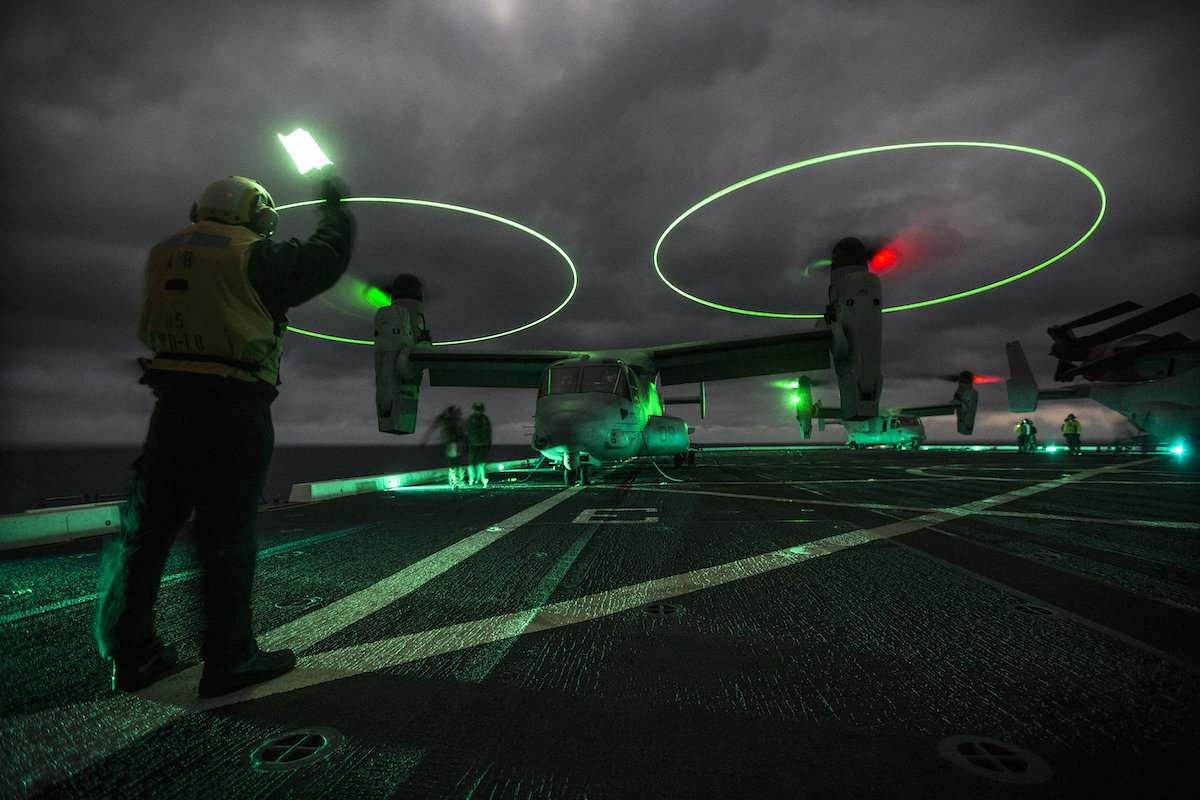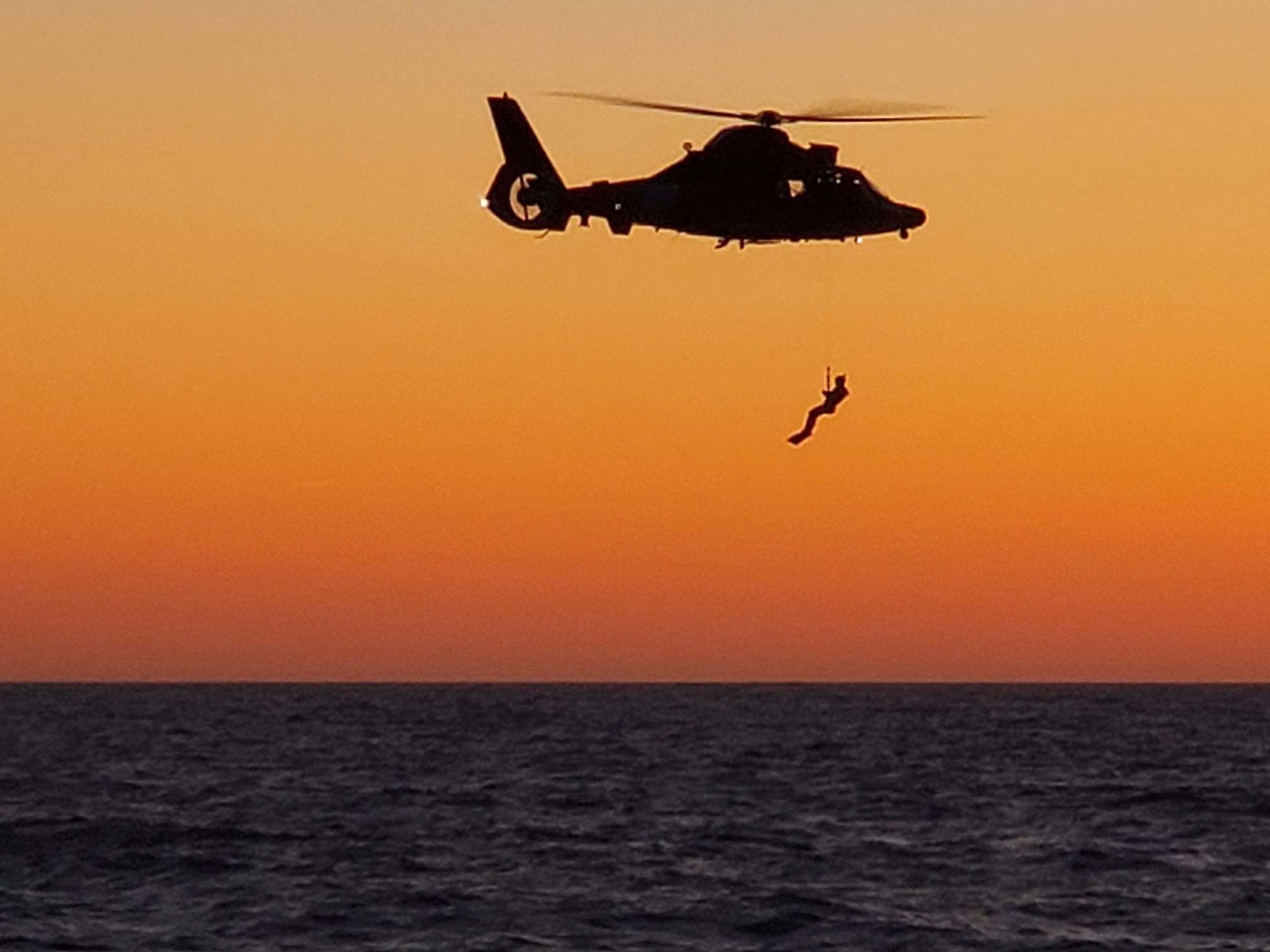The Military Isn’t Sure Whether 5G Cell Phones Interfere With Its Planes

New 5G wireless technology is interfering with planes’ radar altimeters: the instruments that help pilots determine how far the aircraft is from the ground. This tool is incredibly important for conducting low-altitude operations, especially at night and during other low-visibility situations. US Marine Corps photo by Sgt. Tyler C. Gregory.
Few things are more important to aviators than the space between their aircraft and the ground. And the one device that pilots on nearly all modern planes rely on to tell them how high they are — a radar altimeter — may be vulnerable to interference from the latest 5G cell phone networks.
The problem lies with the radio frequencies that the latest 5G cell phone technology, rolled out this week by Verizon and AT&T, operates on. As with all cell phones, tiny radios in 5G phones will talk to massive radios mounted on cell towers. But unlike in previous cell phone generations, the frequency they will use is nearly the same as the radio waves that radar altimeters use to measure a plane’s altitude. Radar altimeters, which are sometimes called radio altimeters, are a key component of all modern commercial planes, feeding data to the autopilot, collision avoidance, and other key flight systems as well as the pilot himself. Almost all military planes use radar altimeters as well, though their vulnerability is not as clear.
But the potential conflict is so serious that the Federal Aviation Administration, which regulates all aviation in the US, released a list this week of 67 US airports in which commercial airlines might see their radar altimeters affected by 5G signals from nearby towers.
Many of those airports are home to military flying units, mostly Air National Guard and Air Force Reserve units. The FAA did not put any military bases or airfields on the list.

The FAA issued instructions this week for airplanes using those airports for so-called “low-visibility approaches,” which are often the fault of bad weather. The instructions advise pilots to use equipment other than their radar altimeters. In a pair of airworthiness directives issued in December, the FAA wrote that “the receiver on the radio altimeter typically is highly accurate, however it may deliver erroneous results in the presence of out-of-band radio frequency emissions from other frequency bands. The radio altimeter must detect faint signals reflected off the ground to measure altitude, in a manner similar to radar. Out-of-band signals could significantly degrade radio altimeter functions during critical phases of flight, if the altimeter is unable to sufficiently reject those signals.”
But while the FAA is moving quickly this week to approve civilian airliners for use around 5G towers, military flight authorities have not released any additional guidance for military pilots, and a 5G testing program run by the Air Force won’t start until this weekend.
Coffee or Die Magazine asked a Marine Corps pilot with more than nine years of experience and 1,200 hours in the cockpit of the V-22 Osprey how a radar altimeter works in day-to-day operations. He spoke on the condition of anonymity.
“Specifically for all military aircraft, and specifically helicopters, a lot of the tactical flying that we do is at a very low altitude at night,” he said. “One of my main sources of information is that [radar altimeter].
“And knowing that thing works is what allows us to fly at, you know, 150 feet, 200 feet, in a very demanding way. Whereas, if I don’t have that, that’s now a huge crippling factor of my ability to fly low.”

As of Thursday, Jan. 20, the FAA has cleared 78% of commercial aircraft in the US to make low-visibility landings at airports where new 5G towers have been activated, including all models of Boeing and Airbus airliners and some regional jets built by Embraer. Wireless carriers, including Verizon and AT&T, have agreed to delay turning on their new 5G towers near airports and runways.
“Basically, [5G could] take away a huge tool that all pilots use,” the Osprey pilot said. “The reason I said that it doesn’t affect us specifically that much is that, I swear to God half of them in the V-22 are broken anyway.
“It’s not uncommon for me to get into an aircraft and be like, “Oh, yeah, the [radar altimeter] does not work in this.”
Most aircraft have two types of altimeters: a barometric altimeter, which calculates elevation above sea level using air pressure, and a radar altimeter, which bounces radar waves off the ground as the plane flies. A radar altimeter is much more accurate.
The difference between the two, the pilot explained, is critical.
If an aircraft is flying at 10,000 feet, for example, the barometric altimeter will reflect that altitude. However, if that aircraft is flying over a mountain range with 9,500-foot peaks, the radar altimeter will warn the pilot as the distance between the plane and the ground diminishes.
In helicopter operations, the radar altimeter provides even more vital information as a pilot hovers, particularly if a pilot loses sight of the ground because of swirling debris — a condition known as a brown-out.
The end result of the 5G interference with radar altimeters, the Osprey pilot explained, is that pilots will no longer be able to trust a plane’s autopilot, which becomes tricky when bad weather moves in and in other low-visibility situations. Additionally, heavily trafficked airports run almost entirely off autopilot functions. With so many planes coming and going, computers handle the speed, elevation, and approach of multiple aircraft simultaneously.

“If all that goes away or can no longer be trusted, all these guys are going to have to hand-fly them, which is totally within their ability,” the pilot said. “But, the ability to sequence things [that] happen super quickly, like [airports] do now, basically can’t be trusted until they can figure out that they know for sure that [5G] does not affect that.”
While the FAA is actively clearing commercial planes this week, the Air Force said it was planning to start a multimonth testing process this weekend.
Air Force spokesperson Ann Stefanek told Coffee or Die that the service is launching a flight-test program Saturday to gather data on how 5G affects radar altimeter equipment. The tests are scheduled to run through April 1.
Stefanek said the Air Force hadn’t finalized which aircraft would be used for the program, but it will include both rotary and fixed-wing aircraft using radar altimeters employed by the majority of the Department of Defense’s fleet.
And it’s not as if manufacturers and airlines can just plug in a different kind of radar altimeter. The first of its kind was invented in 1924, and it has been perfected over nearly a century. And the waves the device emits travel at a certain wavelength, which developers surely chose because they work particularly well, the Osprey pilot explained.
The radar altimeter was implemented to make air travel safer for both pilots and their passengers. But if the complications brought forth by the deployment of 5G technology are not dealt with, they could impact how safe air travel really is.
“We’ve spent the last [100] years witnessing airplane crashes and developing systems to prevent them,” the Osprey pilot said. “And one of the major systems that we’ve come up with is radar altimeters and warnings for low altitude … And this potentially takes all of them away.”
Read Next:

Dustin Jones is a former senior staff writer for Coffee or Die Magazine covering military and intelligence news. Jones served four years in the Marine Corps with tours to Iraq and Afghanistan. He studied journalism at the University of Colorado and Columbia University. He has worked as a reporter in Southwest Montana and at NPR. A New Hampshire native, Dustin currently resides in Southern California.
BRCC and Bad Moon Print Press team up for an exclusive, limited-edition T-shirt design!
BRCC partners with Team Room Design for an exclusive T-shirt release!
Thirty Seconds Out has partnered with BRCC for an exclusive shirt design invoking the God of Winter.
Lucas O'Hara of Grizzly Forge has teamed up with BRCC for a badass, exclusive Shirt Club T-shirt design featuring his most popular knife and tiomahawk.
Coffee or Die sits down with one of the graphic designers behind Black Rifle Coffee's signature look and vibe.
Biden will award the Medal of Honor to a Vietnam War Army helicopter pilot who risked his life to save a reconnaissance team from almost certain death.
Ever wonder how much Jack Mandaville would f*ck sh*t up if he went back in time? The American Revolution didn't even see him coming.
A nearly 200-year-old West Point time capsule that at first appeared to yield little more than dust contains hidden treasure, the US Military Academy said.












